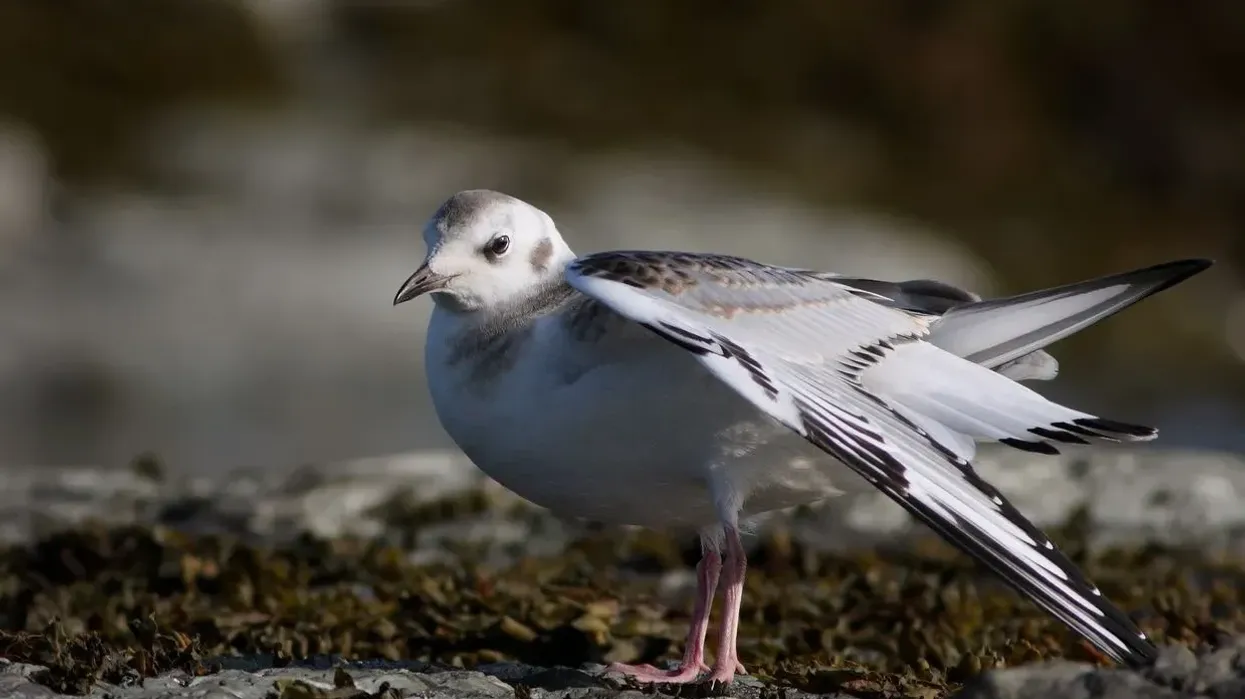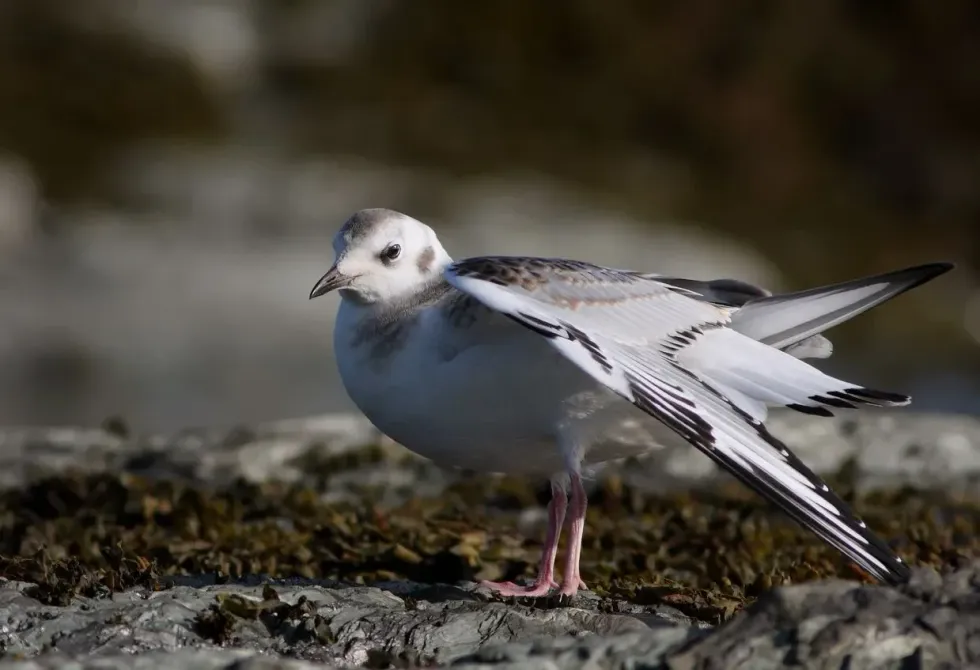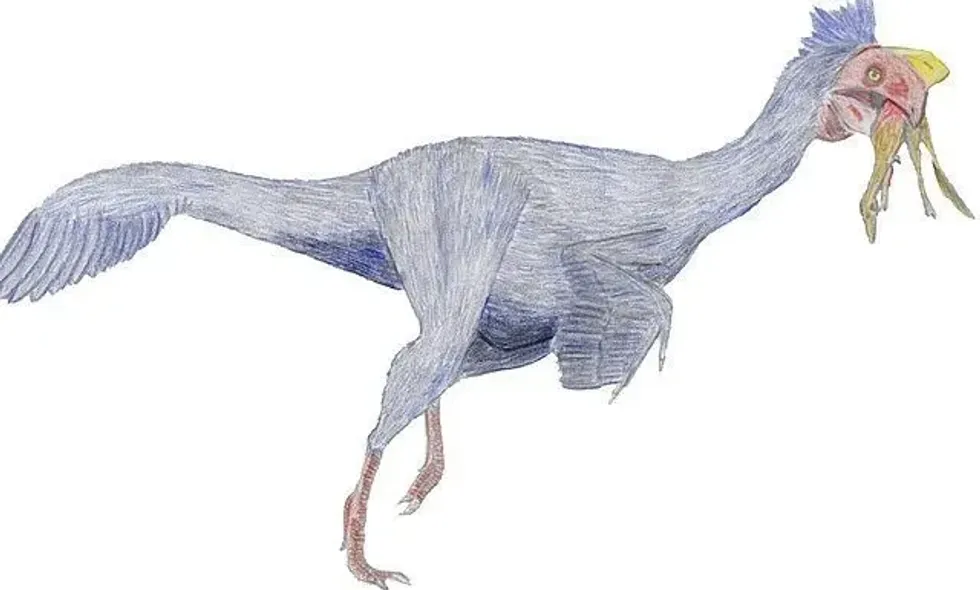Named after the French ornithologist Charles Lucien Bonaparte, the Bonaparte's gulls are North American birds of the Laridae family. The genus name is an amalgamation of the Greek terms 'chroikos' with 'kephalē' translating to 'color' and 'head' respectively.
The word indicates the appearance of the breeding adults of the species that exhibit a dark slate-black head. George Ord of Philadelphia designated the 'philadelphia' epithet to these gulls.
Migration is observed at the end of July stretching through to November when these gulls flock with the little gull, Ross's gull, and others to avoid the chilly winters. They navigate to a warmer climate, mostly near the coast.
These gray-white gulls are adept at preying on insects in flight while also diving and plucking out small fish and floating eggs from lakes and rivers. They're known to be kleptoparasites, stealing fish and insects from other birds like dunlins. However, the species is hunted down by hawks, ravens, and other predatory birds.
If you want to learn such enlightening facts about some other bird species, then these exhilarating facts about the laughing gull and ring-billed gull are unmissable!
Bonaparte's Gull Interesting Facts
What type of animal is a Bonaparte's gull?
The Bonaparte's gull (Chroicocephalus philadelphia) is a species of bird belonging to the family Laridae. Other scientific names of the species include Larus philadelphia and Sterna philadelphia.
What class of animal does a Bonaparte's gull belong to?
Bonaparte's gulls have been listed under the Aves class while they're a member of the Chroicocephalus genus.
How many Bonaparte's gulls are there in the world?
As per estimates, the number of adult individuals of the gull species falls in the range of 255,000-525,000. The abundant population distribution of the bird species renders it the Least Concern status.
Where does a Bonaparte's gull live?
The geographic range map of Bonaparte's gulls encompasses the northern regions of North America. These birds of the Laridae family can be found in Canada, Quebec, and Alaska.
These birds can be sparsely spotted in the Azores and western Europe. A pair has been traced even in Iceland. The Bonaparte's gull winters on the coast and can be located near the Great Lakes.
What is a Bonaparte's gull's habitat?
Thriving in a wide-ranging habitat, Bonaparte's gull can be traced in several parts to northern North America. Breeding occurs mainly in the boreal forest spread throughout southern Alaska, central Quebec, as well as western Canada.
These gulls prefer to construct nests in trees (mostly conifer) and tend to inhabit open areas like marshes, swamps, freshwater lakes, bogs, estuaries, lagoons, and islands. These birds migrate towards the warm coast of the east or west during harsh winters.
Who does Bonaparte's gull live with?
Bonaparte's gulls are pretty sociable as they gather in large flocks to forage for a variety of insects. Sometimes they flock with mixed species such as the black-headed gull, Ross's gull, and little gull.
How long does a Bonaparte's gull live?
Bonaparte's gulls have a life expectancy of about 18 years.
How do they reproduce?
These monogamous gulls attain sexual maturity after two years. The breeding season initiates from the middle of June. Both partners engage in courtship rituals by displaying flights and calling out loudly to each other. The elaborate courtship procedure ends with copulation.
After the Bonaparte's gull breeds successfully, they select a suitable nesting area. These gulls usually nest in trees of the boreal forest. Tress like black spruce and jack pine are mostly preferred. The nesting period extends for six to seven days, after which the young leave the nest.
The incubation period stretches for about 22 - 25 days. Typically three olive-buff eggs with brown spots are laid, but the clutch comprises two to four eggs. The young are nurtured and fed by both partners.
What is their conservation status?
The International Union for Conservation of Nature (IUCN) Red List considers the conservation status of Bonaparte's gull (Larus philadelphia) belonging to the Laridae family to be of Least Concern owing to their widespread population within the range map.
Bonaparte's Gull Fun Facts
What does Bonaparte's gull look like?
The species comes in a small-sized body. These birds possess a smaller head and bill in comparison to other North American hooded gulls. Males and females do not project sexual dimorphism.
The feathers on the upperparts of the adults are gray, while the underparts are completely white shaded. The wing is black-tipped on the upper side, while the underside has pale gray fringes. The breeding adults exhibit a slate-black hood that is also common in the black-headed gull.
The wingspan of these birds ranges from 30-33 in (76-84 cm). These birds have orangish-red legs and a black bill. A juvenile Bonaparte's gull resembles the nonbreeding adults.
How cute are they?
Cuteness is subjective, but these white-gray-colored gulls are extremely appealing to the senses!
How do they communicate?
These birds interact via innumerable calls. Calls that sound like a nasal 'cheeer' have been recorded. During breeding, loud calls can be heard.
How big is a Bonaparte's gull?
The average length of the Bonaparte's gulls falls in the range of 11-15 in (28-38 cm). Although considered to be one of the smallest gull species, they're slightly larger than the Glaucous gull measuring around 26-28 in (68-71 cm) in length.
How fast can a Bonaparte's gull fly?
The accurate flight speed of these gulls remains undeciphered. However, the flight speed of common gulls ranges from 15-28 mph (24-45 kph). The upper elevation limit has been recorded at 1,969 ft (600 m). It's a delight to witness the Bonaparte's gull in flight. The species draws similarities with a flying tern.
How much does a Bonaparte's gull weigh?
The bird species can achieve an average weight of about 6.3-7.9 oz (178-224 g). Females are comparatively lightweight.
What are the male and female names of the species?
Generally, male birds are regarded as cocks, while females are called hens. For ease of memory, these gulls can just be referred to as male and female gulls, respectively.
What would you call a baby Bonaparte's gull?
Baby Bonaparte's gulls are called chicks, nestlings, or hatchlings.
What do they eat?
These gulls indulge in a carnivorous diet. An assortment of small fish, mollusks, crustaceans, marine worms, and a few other invertebrates are consumed. Common small fish species include herring, pollock, and sand lance. In the breeding season, these gulls feast on insects plentiful in the boreal forest comprising locusts, beetles, grasshoppers, and others (substituting the fish and crustaceans).
Are they dangerous?
These North American birds are not exactly dangerous. Aggression has been observed mostly among the adults while defending the nesting space and the young in the nest. They can also be hostile towards humans while feeding on their hands.
Would they make a good pet?
It's very uncommon to come across gulls being reared as pets. These wild birds are not meant to be estranged from their natural habitat and confined in enclosed spaces. Since these bird species of North America haven't be tamed, their behavior as pets cannot be stated.
Did you know...
The adults construct their nests in trees near lakes so that the young can have access to the water after leaving the nest.
Let's go for a Bonaparte's gull vs. laughing gull comparison! Firstly, the laughing gull has medium size while the former is relatively small. The most prominent distinction is that the latter utters calls that sound more like a laugh. Unlike the laughing gulls, the former species build nests in trees.
How did Bonaparte's gull get its name?
The scientific name Sterna philadelphia was first used by George Ord. Previously, the species was listed under the Larus genus but later, George Newbold Lawrence regrouped these birds under the Chroicocephalus genus.
The bird derived its name from the nephew of Napoleon Bonaparte, Charles Lucien Bonaparte, who ventured out to explore birds in America and spent eight long years in the pursuit.
The scientific name of the bird Chroicocephalus philadelphia comes from its slate-black hood visible during the breeding season as well as from the region from where the bird specimen was extracted, that is, Philadelphia.










